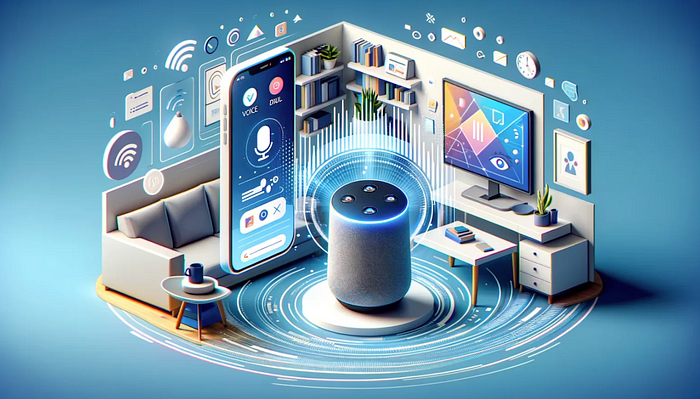Top 10 Strategies That Will Transform Marketing In 2024.
As we drift slowly into 2024, the marketing landscape is poised for another leap forward, driven by rapid technological advancements and changing consumer behaviors.
 This year demands a blend of innovation, agility, and a deep understanding of digital ecosystems to craft strategies that not only resonate with audiences but also set the pace for competitors to follow.
This year demands a blend of innovation, agility, and a deep understanding of digital ecosystems to craft strategies that not only resonate with audiences but also set the pace for competitors to follow.
In my experience, innovation in marketing isn’t just about adopting the latest technologies or jumping on new platforms; it’s about rethinking how we connect with our audience, understanding their evolving needs, and creating experiences that matter to them.
It’s about building relationships, trust, and value in every interaction. As someone who has navigated the ebbs and flows of marketing trends, I’ve seen firsthand the impact of strategic innovation.
The strategies that will transform marketing this year aren’t just trends; they’re a reflection of a deeper shift towards more personalized, immersive, and ethical marketing practices.
The road ahead is exciting and challenging, with opportunities to redefine what it means to engage with consumers.
As we delve into the top 10 innovative strategies for 2024, we’ll explore not just the ‘what’ but the ‘why’ and the ‘how’ of these shifts, drawing on professional insights and personal experiences to paint a comprehensive picture of the future of marketing.
Whether you’re a seasoned marketer or a business owner looking to stay ahead of the curve, understanding these strategies will be crucial to navigating the dynamic landscape of 2024 successfully.
Table of Contents
- 1. Personalization at Scale
- 2. Voice and Visual Search Optimization
- 3. Interactive and Immersive Content
- 4. Sustainability and Ethical Marketing
- 5. AI-Powered Customer Insights
- 6. Privacy-First Personalization
- 7. Influencer Collaborations and Co-Creation
- 8. Cross-Channel Marketing Integration
- 9. Real-Time and Predictive Analytics
- 10. Blockchain Technology in Marketing
- Conclusion: Embracing the Future of Marketing

1. Personalization at Scale
In the world of marketing, personalization has transitioned from a nice-to-have to a critical differentiator. As we look towards 2024, the concept of personalization is set to undergo a transformative shift, moving beyond basic customizations to offer truly individualized customer experiences at scale. This evolution is powered by advancements in AI and data analytics, allowing marketers to understand and predict customer preferences with unprecedented accuracy.
The essence of personalization at scale lies in its ability to make each customer feel uniquely understood and valued. Imagine a world where marketing messages, product recommendations, and even the timing of engagements are so tailored to an individual that every interaction feels personal. This is not just about improving sales; it’s about building a deeper, more meaningful relationship with each customer.
From my professional experience, the implementation of personalization at scale has shown to significantly enhance customer loyalty and engagement. Companies that excel in personalization can see a notable increase in customer lifetime value, as personalized experiences often lead to repeated engagements and increased trust. The key lies in leveraging data not just to sell, but to serve, providing value that resonates with each customer’s specific needs and preferences.
However, achieving this level of personalization requires a sophisticated understanding of data and a commitment to using it responsibly. Privacy considerations are paramount, as consumers become increasingly aware of and concerned about how their data is used. Balancing personalization with privacy is a delicate dance that marketers must master to earn and maintain consumer trust.
In 2024, personalization at scale will not be just a strategy but a necessity, driving marketers to innovate and adopt new technologies that enable them to connect with their audience on a deeper level. The future of marketing lies in creating personalized experiences that not only meet but anticipate customer needs, making every interaction meaningful and every customer feel valued.
2. Voice and Visual Search Optimization
As we navigate through the digital age, voice and visual search are rapidly gaining traction, reshaping how consumers find information, products, and services online. The rise of smart speakers, voice assistants, and advanced image recognition technologies has made voice and visual searches not just convenient but often the preferred method of interaction for many users.
By the end of 2024, optimizing for these search modalities will be imperative for brands looking to maintain visibility and relevance in a crowded digital landscape.
From a personal perspective, adapting to voice and visual search has been an enlightening journey. It’s fascinating to see how natural language processing and AI have evolved to understand not just what we say, but how we say it, capturing the nuances of human speech and visual cues.
This shift necessitates a more conversational and visually appealing approach to content creation. It’s not just about keywords anymore; it’s about context, relevance, and engaging the user in a more intuitive way.
Professionally, integrating voice and visual search optimization into marketing strategies has proven to be both a challenge and an opportunity. The challenge lies in understanding the different ways people use voice and visual searches compared to traditional text-based queries.
The opportunity, however, is immense. By optimizing for these searches, brands can connect with their audience at a more instinctive level, providing answers and solutions in the way users now seek them.
Voice search optimization often involves focusing on long-tail keywords and question-based queries, mirroring natural speech patterns. For visual search, it’s about ensuring images are high-quality, contextually relevant, and properly tagged to appear in visual search results. Both require a deep understanding of your audience’s search behavior and preferences.
As we slide into 2024, the brands that will thrive are those that recognize the importance of voice and visual search optimization. It’s a testament to the ever-evolving nature of technology and user behavior, urging marketers to continuously adapt and innovate.
Embracing these changes not only enhances search visibility but also fosters a deeper connection with the audience by meeting them where they are and in the manner they prefer.
3. Interactive and Immersive Content
In the ever-evolving digital landscape, the emergence of interactive and immersive content has marked a significant shift in how brands engage with their audiences.
This transformative approach to content creation, leveraging technologies such as virtual reality (VR), augmented reality (AR), and interactive video, offers users not just information but experiences.
As we look towards 2024, these immersive experiences are set to redefine the boundaries of digital engagement, offering new dimensions of interaction that are more engaging, memorable, and impactful.
Drawing from my journey in the digital marketing realm, it’s clear that interactive and immersive content is not a fleeting trend but a fundamental shift in consumer expectations.
Users today seek more than passive consumption; they desire to be part of the story, to influence its outcome, and to immerse themselves in experiences that resonate on a personal level.
This shift represents a unique opportunity for brands to connect with their audience in a more meaningful way, creating experiences that leave lasting impressions and foster deep emotional connections.
From a professional perspective, incorporating immersive technologies into marketing strategies requires a blend of creativity, technical understanding, and a keen sense of storytelling.
The power of VR and AR, for example, lies in their ability to transport users to different places, times, or situations, enabling brands to showcase their products or services in context, simulate real-life experiences, or create entirely new worlds for users to explore.
Interactive videos, on the other hand, empower users to control their journey, making decisions that tailor the narrative to their preferences.
The challenge, however, lies in crafting these experiences in a way that is accessible, engaging, and relevant to the target audience. It’s not just about the novelty of the technology but how it is used to convey a message, tell a story, or solve a problem.
As we advance, the brands that succeed will be those that not only embrace these technologies but also integrate them seamlessly into their overall marketing strategy, ensuring they add real value to the user experience.
In 2024, interactive and immersive content will be more than just an option; it will be a critical component of effective digital marketing strategies. By embracing these technologies, brands can create more profound, engaging, and memorable experiences that not only captivate their audience but also drive deeper engagement, loyalty, and advocacy…
>>> Keep Reading Over At TMH






































